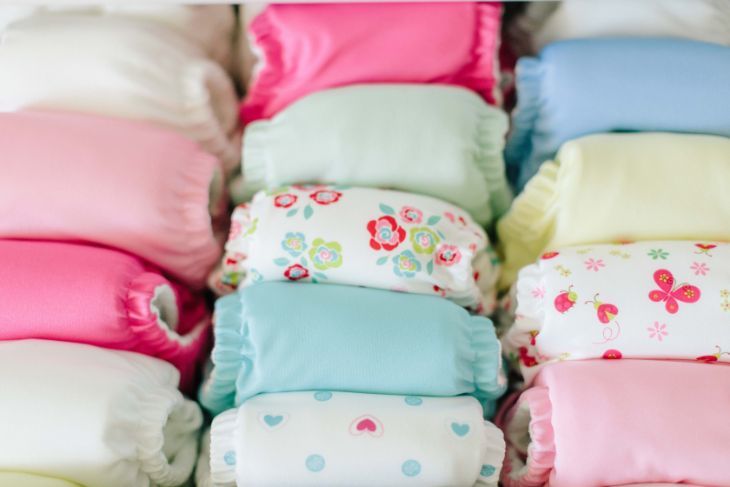TIDDLY TOES
(CLOTH DIAPER)
A cloth diaper (American English) or a cloth nappy (Australian English and British English) is a reusable diaper made from natural fibers, man-made materials, or a combination of both.[1] They are often made from industrial cotton which may be bleached white or left the fiber’s natural color. Other natural fiber cloth materials include wool, bamboo, and unbleached hemp. Man-made materials such as an internal absorbent layer of microfiber toweling or an external waterproof layer of polyurethane laminate (PUL) may be used. Polyester fabrics micro fleece or suede cloth are often used inside cloth diapers as a "stay-dry" wicking liner because of the non-absorbent properties of those synthetic fibers.
Modern cloth diapers come in a host of shapes, including preformed cloth diapers, all-in-one diapers with waterproof exteriors, fitted diaper with covers and pocket or "stuffable" diapers, which consist of a water-resistant outer shell sewn with an opening for insertion of absorbent material inserts.[2] Many design features of modern cloth diapers have followed directly from innovations initially developed in disposable diapers, such as the use of the hour glass shape, materials to separate moisture from skin and the use of double gussets, or an inner elastic band for better fit and containment of waste material.
Traditional “Flat”
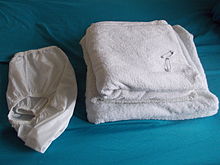
Safe Diaper Clip from Mid-1960’s.
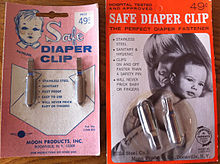
Pocket diaper with hook and loop closure
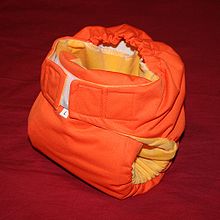
Baby Wearing pocket diaper with snap closure
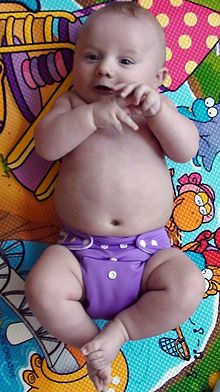
A cloth diaper (American English) or a cloth nappy (Australian English and British English) is a reusable diaper made from natural fibers, man-made materials, or a combination of both.[1] They are often made from industrial cotton which may be bleached white or left the fiber’s natural color. Other natural fiber cloth materials include wool, bamboo, and unbleached hemp. Man-made materials such as an internal absorbent layer of microfiber toweling or an external waterproof layer of polyurethane laminate (PUL) may be used. Polyester fabrics micro fleece or suede cloth are often used inside cloth diapers as a "stay-dry" wicking liner because of the non-absorbent properties of those synthetic fibers.
Modern cloth diapers come in a host of shapes, including preformed cloth diapers, all-in-one diapers with waterproof exteriors, fitted diaper with covers and pocket or "stuffable" diapers, which consist of a water-resistant outer shell sewn with an opening for insertion of absorbent material inserts.[2] Many design features of modern cloth diapers have followed directly from innovations initially developed in disposable diapers, such as the use of the hour glass shape, materials to separate moisture from skin and the use of double gussets, or an inner elastic band for better fit and containment of waste material
Benefits of using Cloth diaper
1. Save A Significant Amount Of Money
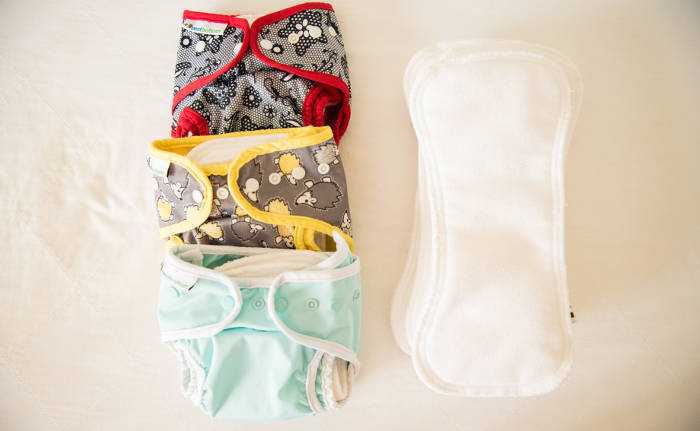
Even the disposables viewed as the green option generally use polymer crystals inside the diapers to suck up your baby’s pee. It’s hard to beat the absorbency and parents love diapers that have less leaking. But is dodging a few leaks worth putting chemicals you can’t even pronounce next to your baby’s skin?
With 27.4 billion disposable diapers sent to landfills in the U.S. each year, the U.S. isn’t set to lessen its methane gas production anytime soon.
And while landfills may have solved some of the immediate groundwater contamination problems we had with open dumps, contamination is still a real threat.
The Chemicals used in the Disposable diaper
1. Sodium Polyacrylate
2. Phthalates
3. Tributyl Tin
4. Dioxin
5. Other Issues Linked To Disposables
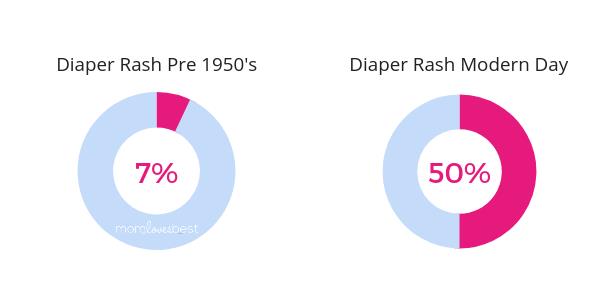
Here are some ideas:
